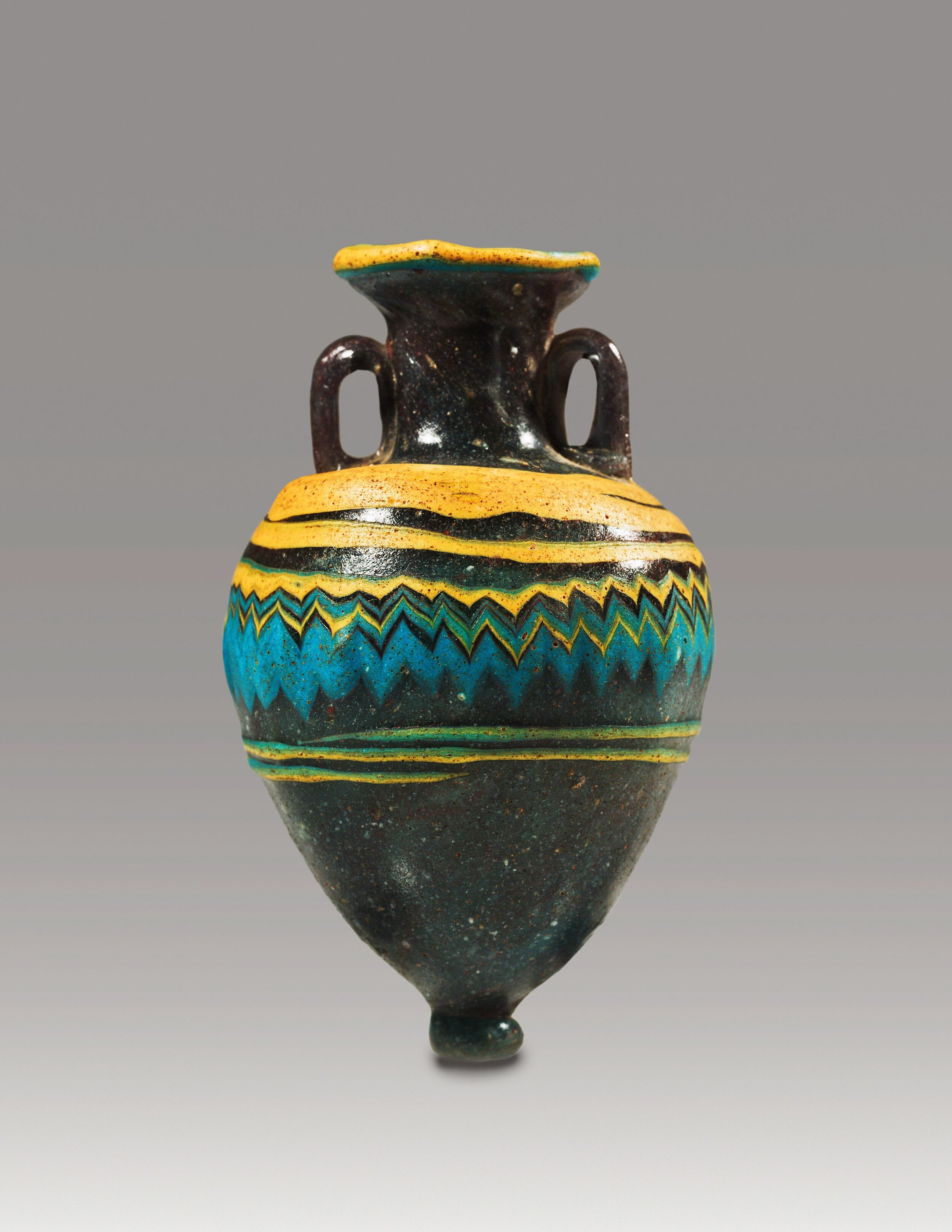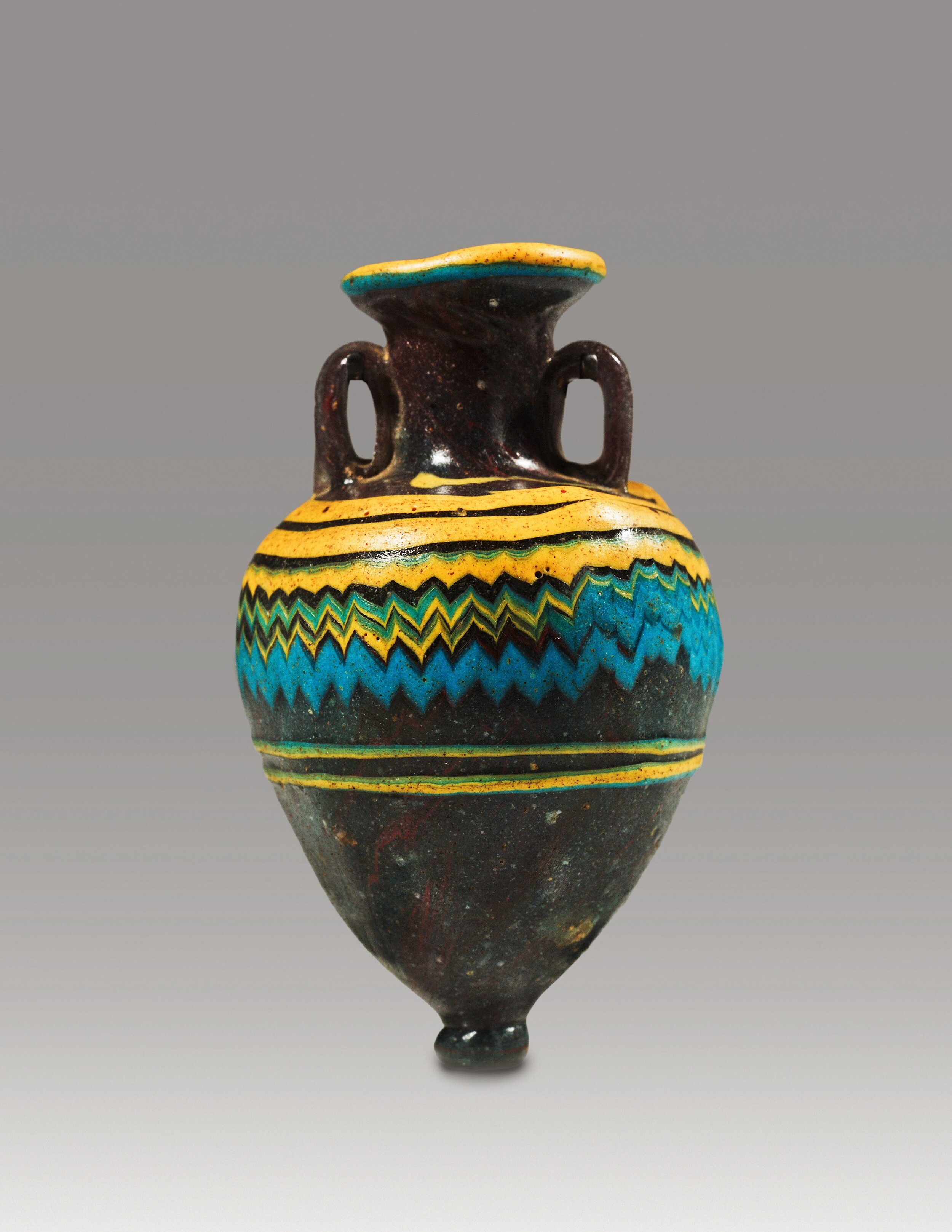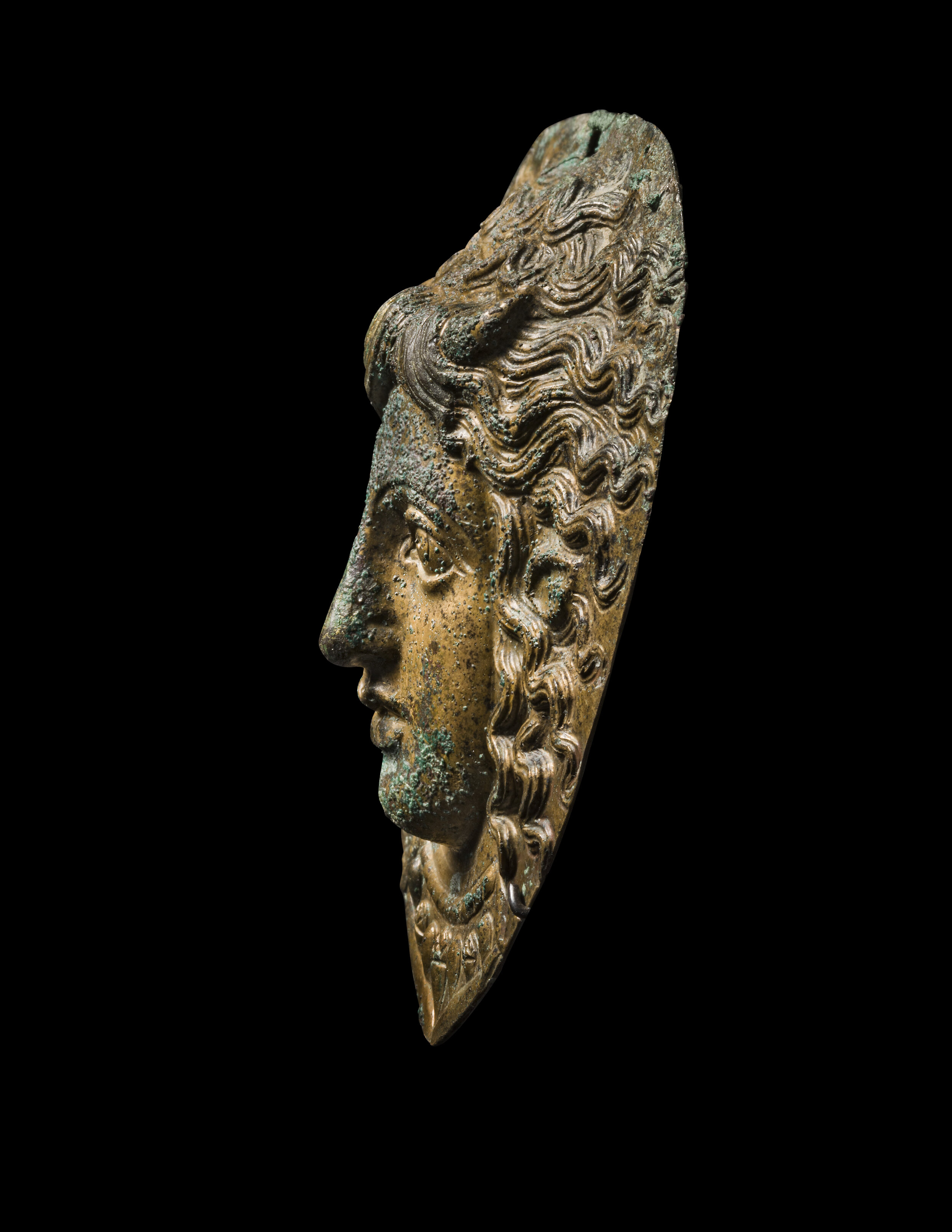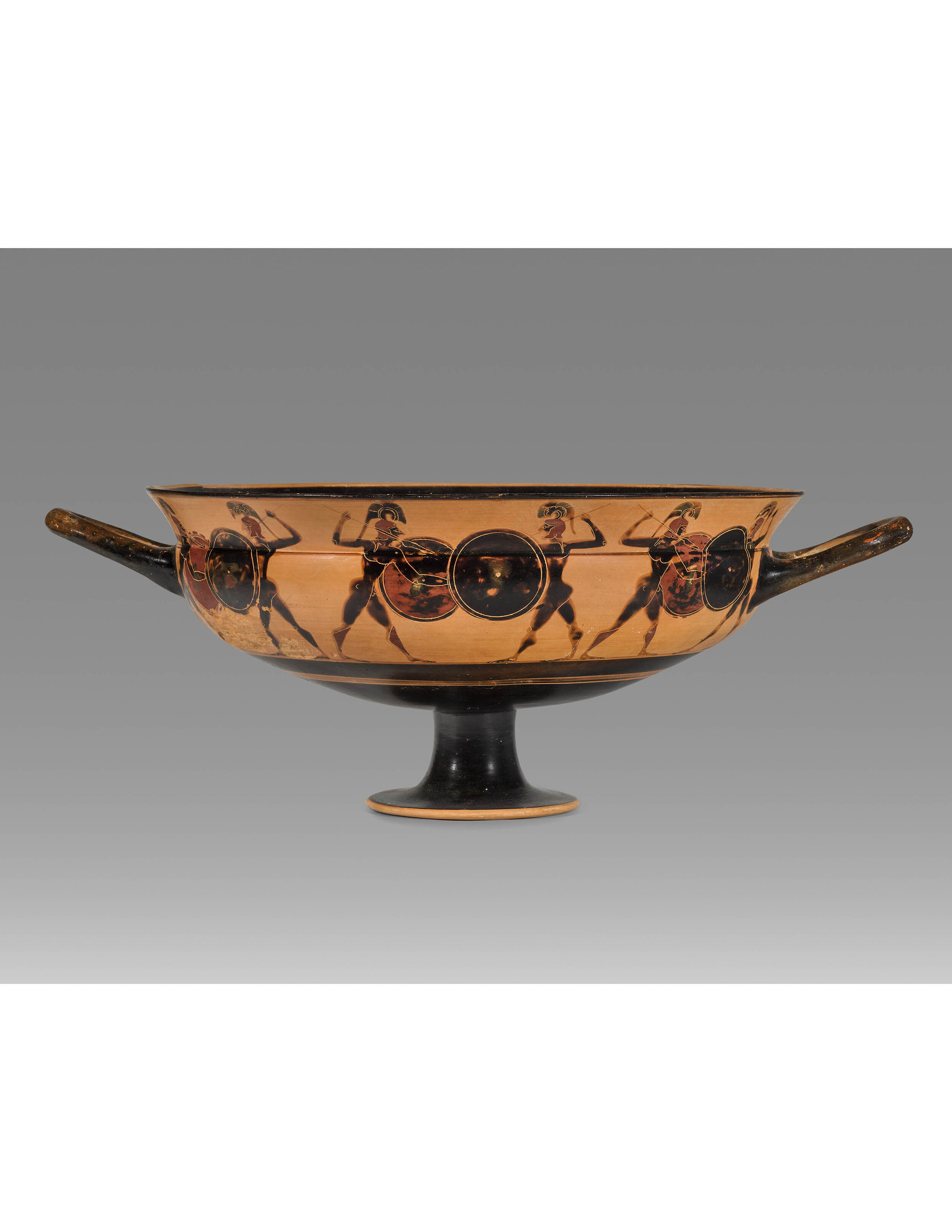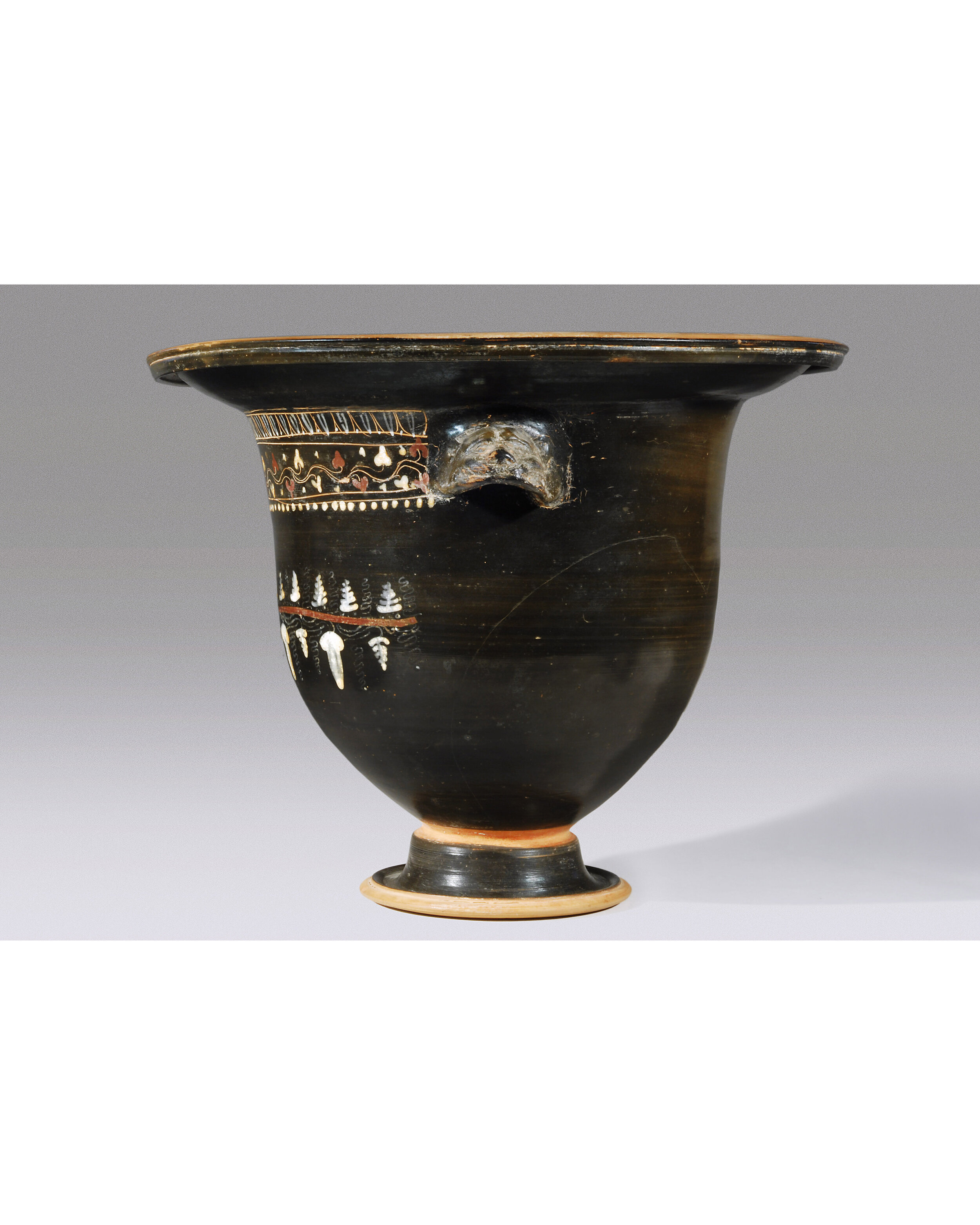Ancient Attic Greek Plastic vase in the shape of a Woman’s Head







Ancient Attic Greek Plastic vase in the shape of a Woman’s Head
Greek, Attic, ca. 450 B.C.
Terracotta
H: 15 cm
PROVENANCE: Ex- European private collection
Serial NO: 1170
At the end of the Archaic period and throughout the Classical period, Greek potters produced a number of fascinating sculptural or plastically rendered vases called “head vases,” which took the shape of female heads or the heads of exotic looking foreigners. Mythological beings such as satyrs, the god Herakles, and the goddess Aphrodite were also represented. The shapes of these vases, usually in the form of oinochoai(wine pitchers) and sometimes kantharoi (wine cups with high vertical handles), were associated with wine drinking and the symposium. This present vessel is the oinochoe. As is standard for the production of these vases, the top part of the vessel is wheel-made and takes the form of a trefoil oinochoe, having a high, curving handle, with a mouth pinched into a trefoil shape. The mold-made head of the woman functioned as the body and foot of the oinochoe. The back of her head, the handle, neck and mouth of the vessel is covered with a deep black, mirror-like glaze. The woman’s eyebrows are also indicated by black glaze and her eyes are outlined in black with the sclera of the eyes in added white. Her hair is wrapped in a scarf-like cloth, a sakkos, which is also black and therefore blends in with the black of the handle and mouth of the vessel. It is made evident by the rounded, bulging form at the nape of her neck and, above her forehead, contrasting with bangs that emerge from the sakkos in an arch of curly hair framing the upper part of her face. The band of black encircling the vessel’s foot accentuates the base, and may indicate the neckline of the elegant woman’s garment. The face of such a female figure – with perfectly formed features, her full lips and straight nose adding to her classic appearance – may indicate that she represents the most beautiful among women, the goddess Aphrodite. Additional evidence for the identification of such female figures as Aphrodite is provided by comparison with similar head vases that take the form of this goddess of love. Organized in the lists of the scholar of Greek vase-painting, J. D. Beazley, this oinochoe is classified as his Type 1.
BIBLIOGRAPHY
BEAZLEY J. D., Charinos: Attic Vases in the Form of Human Heads in Journal of Hellenic Studies 49, 1929, pp. 38-78.
CROISSANT F., Collection P. Canellopoulos: Vases plastiques in Bulletin de correspondence hellénique 97, 1973, pp. 205-225.
REEDER E., Pandora: Women in Classical Greece, Princeton, 1995, pp. 212-15, nos. 47-48.
TRUE M., Athenian Potters and the Production of Plastic Vases in COHEN B., The Colors of Clay: Special Techniques in Athenian Vases, Los Angeles, 2006, pp. 240-249, 268-273, nos. 79-80.
TRUMPF-LYRIZAKI M., Griechische Figurenvasen des Reichen Stils und der späten Klassik, Bonn, 1969, pp. 60-65, pls. 23-25.
